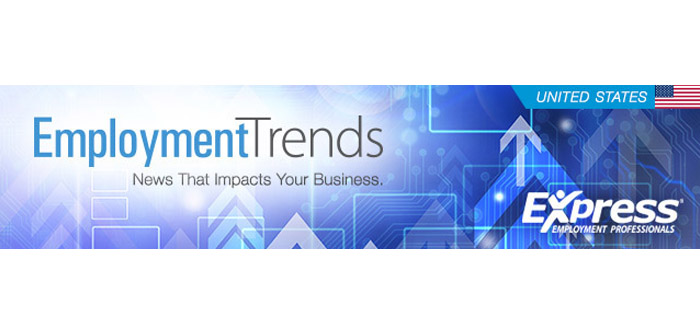Unemployment Rate
4.3%
The unemployment rate increased to 4.3% in July and nonfarm payroll employment rose by 114,000, below the average monthly increase of 215,000 over the prior 12 months. The labor force participation rate changed little at 62.7%. Health care, construction, transportation and warehousing saw job gains, while information saw decreases. The average hourly earnings for all employees on private nonfarm payrolls increased by 8 cents (0.2%) to $35.07. The average workweek edged down by 0.1 hour to 34.2 hours.
According to the American Staffing Association, temporary help employment was 1.71% of total nonfarm employment in July.
Major Industry Employment
Notable Gains and Losses
- Health Care and Social Assistance: +64,000
- Construction: +25,000
- Leisure and Hospitality: +23,000
- Government: +17,000
- Manufacturing: +1,000
- Financial Activities: -4,000
- Temporary Help Services: -8,700
- Information: -20,000
Read the full report at BLS.gov
Workforce and Economic News
The Gap Between AI Expectations and Outcomes in the Workplace are Wide
CNBC — August 9, 2024
Generative artificial intelligence (AI) has decreased productivity and increased workloads, according to more than 75% of employees surveyed in a new study. While nearly all C-suite leaders surveyed (96%) expect generative AI to increase productivity at their company, 47% of employees using this technology say they don’t know how to achieve the productivity gains their employers expect Read more at CNBC.com
Why HR Leaders Should Take a Closer Look at the July Jobs Report
HR Brew — August 2, 2024
The job market cooled more than expected in July and unemployment continued to trend upward. The latest jobs report has renewed concerns of a possible recession and further boosted expectations for interest rate cuts in September. Experts say the implications for HR leaders varies by industry. Read more at HR-Brew.com
How to Combat Quiet Vacationing in Your Workplace by Boosting Morale
Inc. — August 10, 2024
While 83% of Americans are satisfied with their work’s vacation policies, 78% don’t use all their paid time off. Some may be quiet vacationing by taking a day off without notifying their employer, while keeping up the appearance of working with mouse jigglers and automated emails. This trend may be driven by pressure to always be “on,” overwhelming workloads, and being nervous to ask for time off. Read more at INC.com.
America Employed
Rising Workloads and New Jobs Drive Positive Hiring Outlook, Budget Constraints Pose Challenges
ExpressPros.com — July 24, 2024
Hiring outlooks and expectations of workforce increases remain high, largely driven by expansions in work with many citing increased workloads and newly created positions. However, budgetary constraints may be stalling some companies’ growth. This is according to a recent Express Employment Professionals-Harris Poll survey.
Most U.S. hiring managers have a positive outlook for their company’s hiring opportunities for the remainder of the year (81%), and report feelings of optimism (48%), hopefulness (41%), and confidence (41%). Several industries continued to see employment trending upward, including health care, social assistance, leisure and hospitality, professional, scientific, technical services, retail, and government. Read more at ExpressPros.com.
Minimum Wage Hike Woes: 1 in 5 Companies Would Consider Layoffs, Outsourcing and Hour Reductions
ExpressPros.com — July 10, 2024
As of July 1, half of America’s 50 states have enacted a minimum wage increase, and hiring managers say if their company is impacted, they may have to make big changes. This is according to a recent Express Employment Professionals-Harris Poll survey.
More than a third of hiring managers (35%) report their company would increase salaries/wages across the board (not just for minimum wage workers) if/when there is a mandatory minimum wage increase. Around 3 in 10 would utilize/implement more automation/artificial intelligence (31%) in response to mandatory wage increases. However, 1 in 5 report that they would need to take more drastic measures—including reducing their workforce (19%), outsourcing more work (17%), and/or decreasing the number of hours employees work (17%). Read more at ExpressPros.com.





